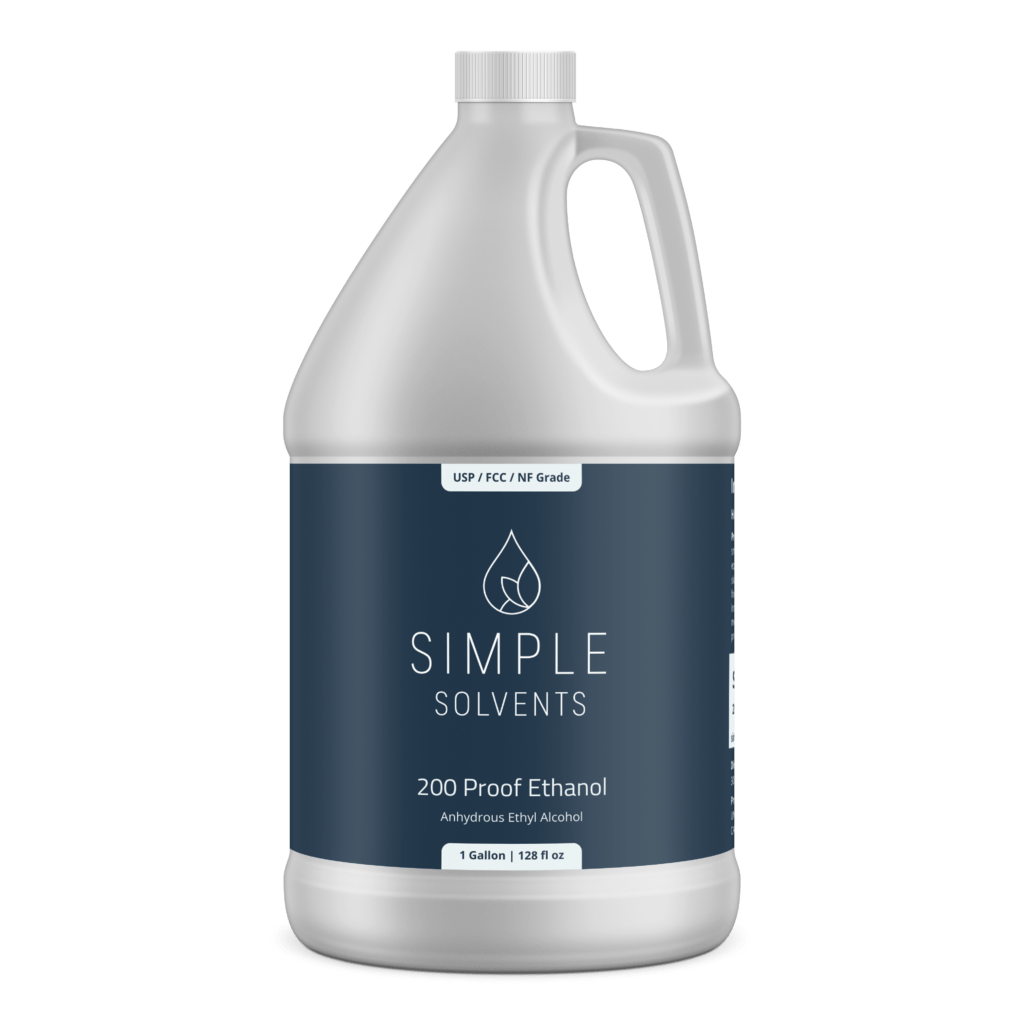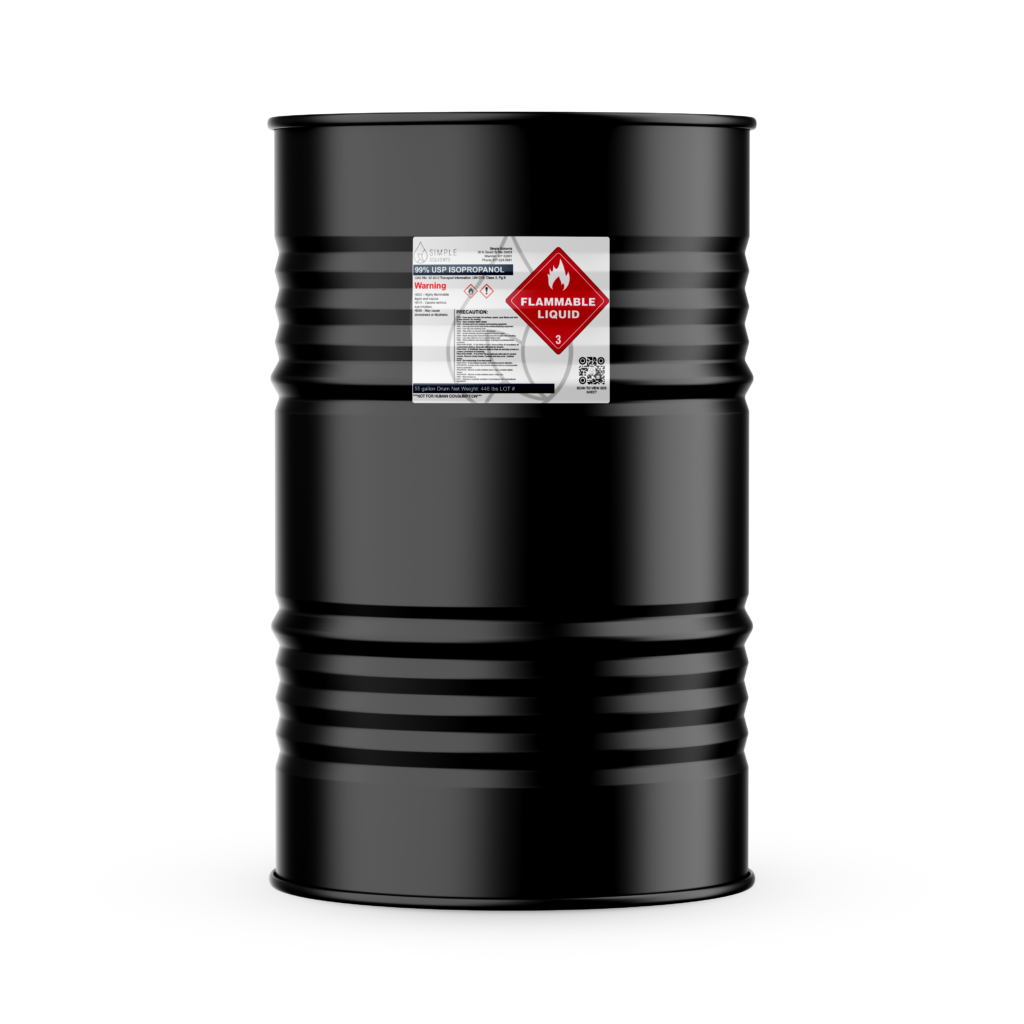Comparing Solvents for Botanical Extraction: A Comprehensive Guide


Comparing Solvents for Botanical Extraction: A Comprehensive Guide
Why do we need to look at comparing solvents for botanical extraction? Botanical extraction is a popular method for isolating desired compounds from plants, whether for medicinal, cosmetic, or food purposes. The process relies on the use of solvents, which play a crucial role in determining the quality and safety of the extracted compounds. With an abundance of solvents available on the market, it can be challenging to determine the best option for your specific extraction project. This comprehensive guide will provide an in-depth comparison of various solvents employed in botanical extraction, their benefits, and potential drawbacks, ultimately helping you make an informed decision. You can find some of the TTB guidelines by clicking here!

The solvents commonly used for botanical extraction include ethyl alcohol (ethanol), isopropyl alcohol (IPA), butane, and supercritical carbon dioxide (CO2). Each solvent has unique properties that affect factors such as extraction efficiency, cost, safety, and the purity of the end product. Comparing solvents for botanical extraction and understanding these differences is crucial for selecting the most appropriate option for your project, ensuring optimal results and compliance with industry guidelines and regulations.
Join us as we navigate the complex world of solvents for botanical extraction, equipping you with invaluable knowledge to optimize safety, efficiency, and affordability in your extraction projects. By understanding the factors that determine each solvent’s appropriateness for your specific needs, you can confidently select the best option, ensuring the highest quality and success in your extraction endeavors.
Comparing Solvents for Botanical Extraction: A Comprehensive Guide
Botanical extraction is a nuanced process that relies heavily on the use of solvents to achieve superior results and safety. With various solvents to choose from, understanding their properties and effects on extraction can be challenging. In this comprehensive guide, we will delve into the world of botanical extraction solvents, providing a detailed comparison and assisting you in making an informed decision.
Properties and Effects on Extraction
To better understand the implications of different solvents, let’s first look at comparing solvents for botanical extraction with their properties and how they influence the extraction process:
- Ethyl Alcohol (Ethanol): As a polar solvent, ethanol can dissolve both polar and non-polar compounds, making it a versatile option for botanical extraction. Its ability to dissolve chlorophyll can be a drawback, however, resulting in undesirable green coloration in extracts.
- Isopropyl Alcohol (IPA): The higher polarity of IPA compared to ethanol makes it less favorable for extracting non-polar compounds, like terpenes, but suitable for extracting more polar compounds.
- Butane: As a non-polar solvent, butane primarily extracts the desirable non-polar compounds found in plants, such as essential oils and cannabinoids, but not the unwanted polar compounds like chlorophyll.
- Supercritical Carbon Dioxide (CO2): CO2 extraction uses carbon dioxide in a supercritical state, combining liquid and gas properties. CO2’s non-polarity and tunable properties make it suitable for a wide range of extractions, achieving high selectivity and leaving no residual solvents.
Extraction Efficiency: Yield, Processing Time, and Compound Specificity
Various factors impact the efficiency of extraction, such as yield, processing time, and compound specificity:
- Ethanol: Ethanol offers fast extraction and high yields across a wide range of compounds, but the co-extraction of chlorophyll may require additional processing steps to purify the end product.
- IPA: While IPA may achieve similar extraction yields to ethanol, the slightly longer processing time and its propensity to dissolve more polar compounds can result in more plant impurities.
- Butane: Butane extraction yields high-quality extracts by selectively targeting non-polar compounds, but safety concerns and a longer processing time may pose challenges.
- CO2: Although CO2 extraction can have lower yields and longer processing times compared to other solvents, its tunable selectivity and lack of residual solvents make it an attractive solvent for high-quality, pure extracts.
Safety Considerations and Compliance with Regulations

When selecting a solvent, safety considerations and regulatory compliance must be considered:
- Ethanol and IPA: As inflammable liquids, both ethanol and IPA require proper safety measures during storage and processing. While considered non-toxic when used for extraction, the FDA regulates residual solvent levels in the final product.
- Butane: The flammability and explosive nature of butane necessitate specialized equipment and stringent safety measures. As a residual solvent, butane levels in the final product must also comply with FDA regulations.
- CO2: The non-toxic, non-flammable nature of supercritical CO2 enables a safer extraction environment. As CO2 leaves no residual solvents in extracts, no further purification is necessary.
Cost-Benefit Analysis
The overall cost of using each solvent in extraction depends on various factors:
- Ethanol and IPA: Due to their low costs, ethanol and IPA are popular choices for small-scale extractions. However, the need for additional processing steps to purify and remove residual solvents may increase overall costs.
- Butane: Butane’s principal cost considerations include investment in specialized equipment and safety measures, leading to high initial costs and potentially higher operating expenses.
- CO2: CO2 extraction systems carry high upfront costs, but the lack of residual solvents and the ability to extract targeted compounds efficiently can result in cost savings over time.

Conclusion
Selecting the best solvent for botanical extraction requires careful evaluation of each solvent’s properties, efficiency, safety concerns, and cost implications. By understanding these factors and how they relate to your specific extraction goals, you can make informed decisions that guarantee superior results and strict adherence to safety standards.
Simple Solvents is committed to providing customers with the knowledge and resources necessary to achieve excellent extraction outcomes. With a keen understanding of the benefits and drawbacks of various solvents, our customers can confidently complete their extraction projects, optimizing safety, efficiency, and quality in their endeavors. A continued focus on best practices and the use of high purity solvents within the botanical extraction community will contribute to a future that prioritizes safety and sustainability while delivering unparalleled results.
